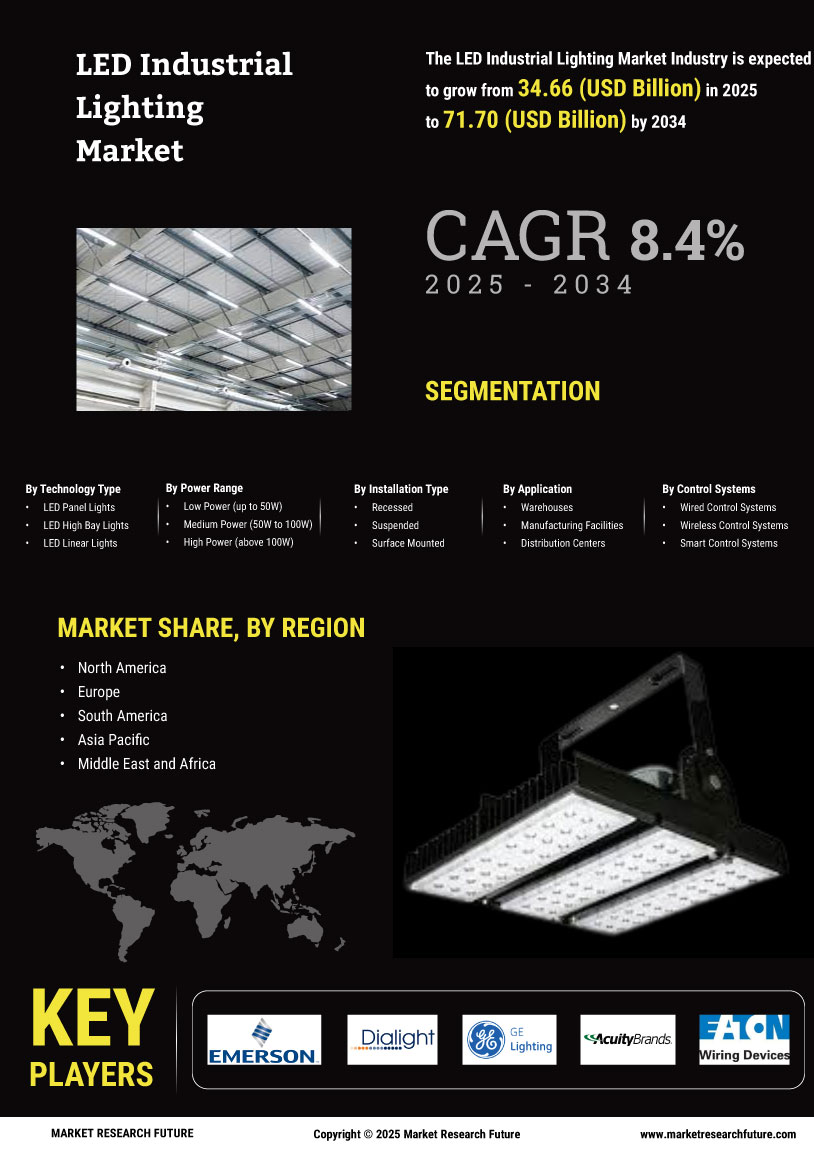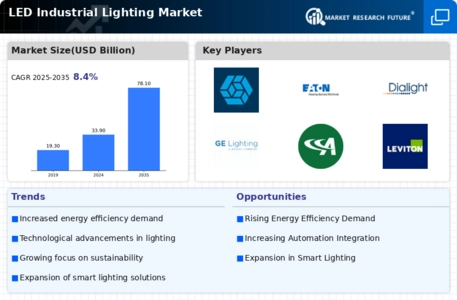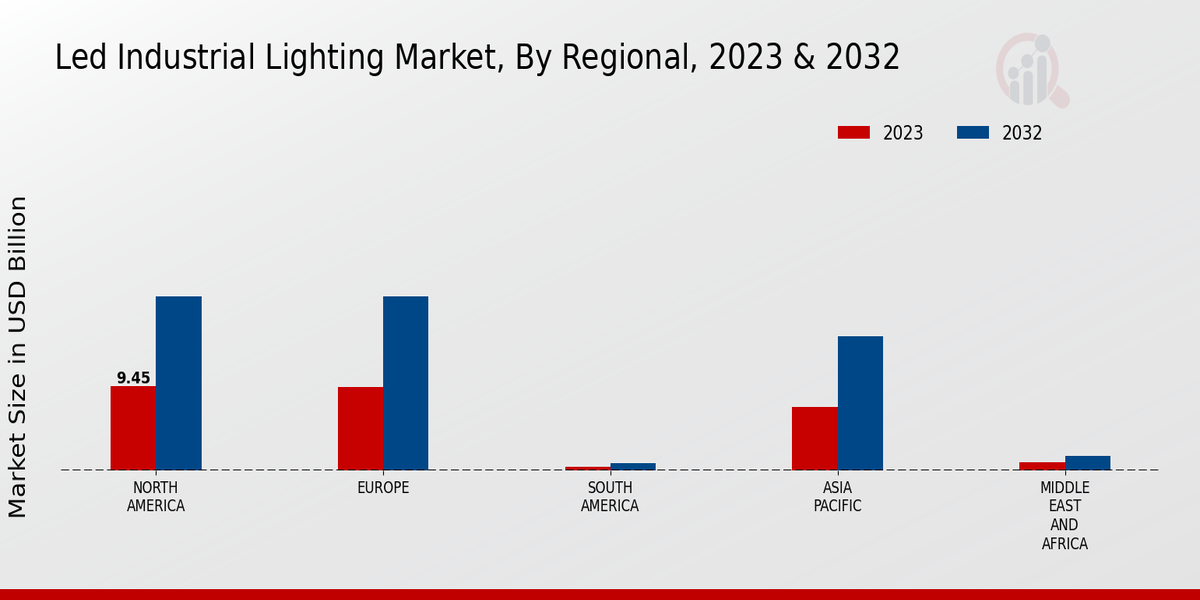Market Growth Projections
The Global LED Industrial Lighting Market Industry is poised for substantial growth, with projections indicating a market size of 33.9 USD Billion in 2024 and an anticipated increase to 78.1 USD Billion by 2035. This growth trajectory reflects a compound annual growth rate (CAGR) of 7.88% from 2025 to 2035. The increasing adoption of energy-efficient lighting solutions, coupled with technological advancements and regulatory support, is likely to drive this expansion. As industries continue to prioritize sustainability and operational efficiency, the demand for LED lighting solutions is expected to rise significantly, shaping the future of industrial lighting.
Regulatory Support and Incentives
Regulatory frameworks and government incentives play a pivotal role in shaping the Global LED Industrial Lighting Market Industry. Governments worldwide are implementing policies that encourage the adoption of LED lighting solutions, often providing financial incentives for businesses that transition from traditional lighting. These initiatives are designed to promote energy efficiency and reduce greenhouse gas emissions. As a result, industries are increasingly investing in LED technology, contributing to the market's anticipated growth. The projected CAGR of 7.88% from 2025 to 2035 underscores the positive impact of regulatory support on the adoption of LED lighting in industrial applications.
Growing Demand for Energy Efficiency
The Global LED Industrial Lighting Market Industry is witnessing a robust demand for energy-efficient solutions as industries strive to reduce operational costs and carbon footprints. LED lighting technology offers significant energy savings, often consuming up to 75% less energy than traditional lighting solutions. This shift is driven by stringent regulations and incentives aimed at promoting energy efficiency. As a result, the market is projected to reach 33.9 USD Billion in 2024, reflecting a growing awareness of sustainability among industrial players. The transition to LED lighting not only enhances energy efficiency but also contributes to improved workplace safety and productivity.
Increasing Focus on Workplace Safety
The emphasis on workplace safety is driving the Global LED Industrial Lighting Market Industry as organizations recognize the importance of adequate lighting in preventing accidents and enhancing employee well-being. LED lighting provides better visibility and color rendering, which can significantly reduce the risk of workplace injuries. Industries such as manufacturing and warehousing are particularly focused on improving lighting conditions to comply with safety regulations and enhance productivity. This growing focus on safety is likely to contribute to the market's expansion, as businesses invest in high-quality LED lighting solutions that meet safety standards and improve operational efficiency.
Environmental Sustainability Initiatives
The Global LED Industrial Lighting Market Industry is increasingly influenced by environmental sustainability initiatives as businesses seek to align with global sustainability goals. The shift towards LED lighting is driven by its lower environmental impact, including reduced energy consumption and longer lifespans compared to traditional lighting. Companies are adopting LED solutions not only to comply with environmental regulations but also to enhance their corporate social responsibility profiles. This trend is expected to accelerate market growth, with projections indicating a significant increase in demand for LED lighting solutions in industrial applications. The commitment to sustainability is reshaping the landscape of the lighting industry.
Technological Advancements in Lighting Solutions
Technological innovations are propelling the Global LED Industrial Lighting Market Industry forward, with advancements in smart lighting systems and IoT integration. These technologies enable real-time monitoring and control of lighting systems, optimizing energy usage and enhancing operational efficiency. For instance, smart LED systems can adjust brightness based on occupancy and natural light levels, further reducing energy consumption. As industries increasingly adopt these advanced solutions, the market is expected to experience substantial growth, potentially reaching 78.1 USD Billion by 2035. The integration of technology not only improves energy efficiency but also enhances the overall user experience in industrial settings.














